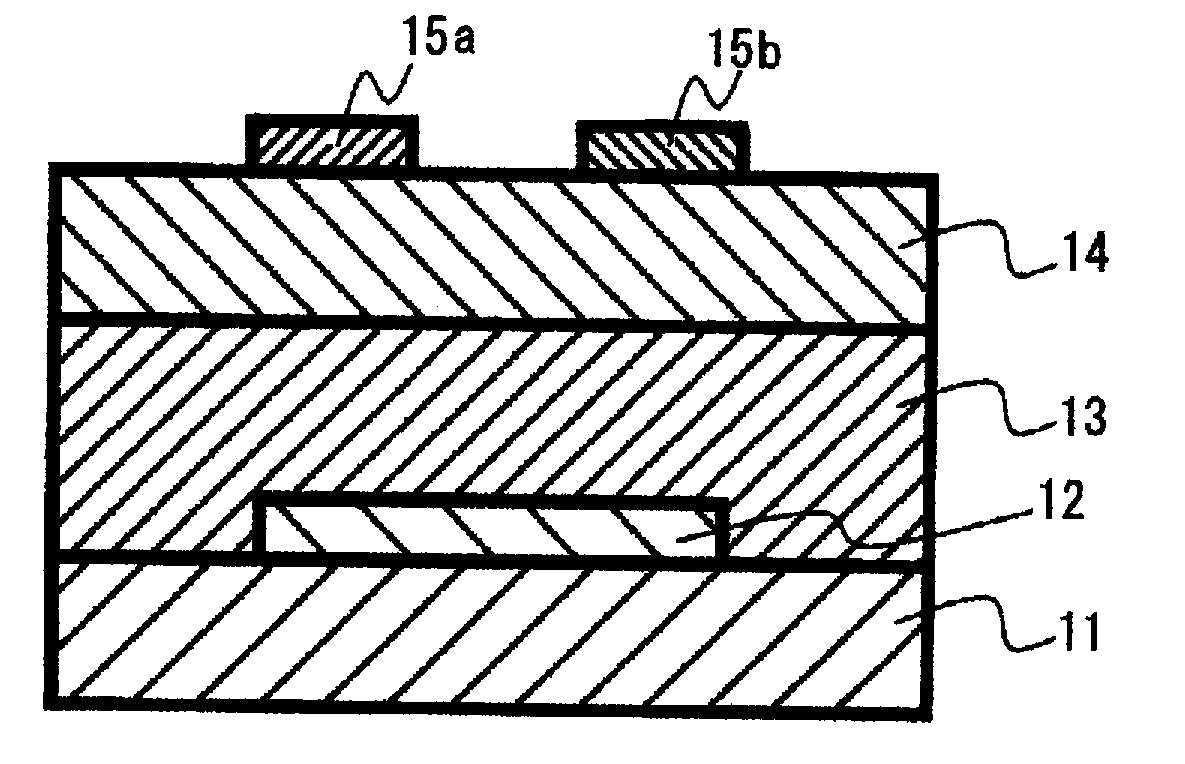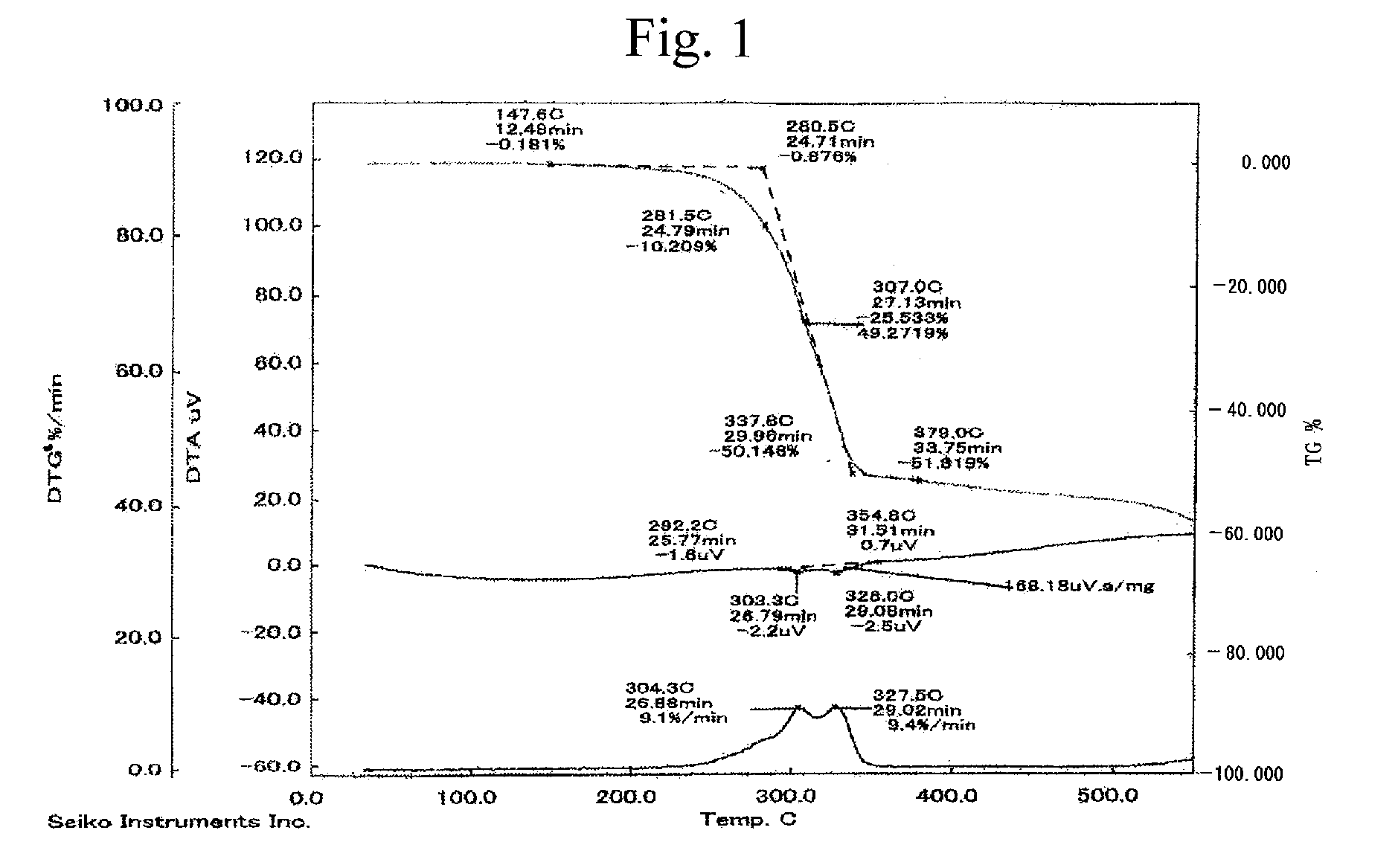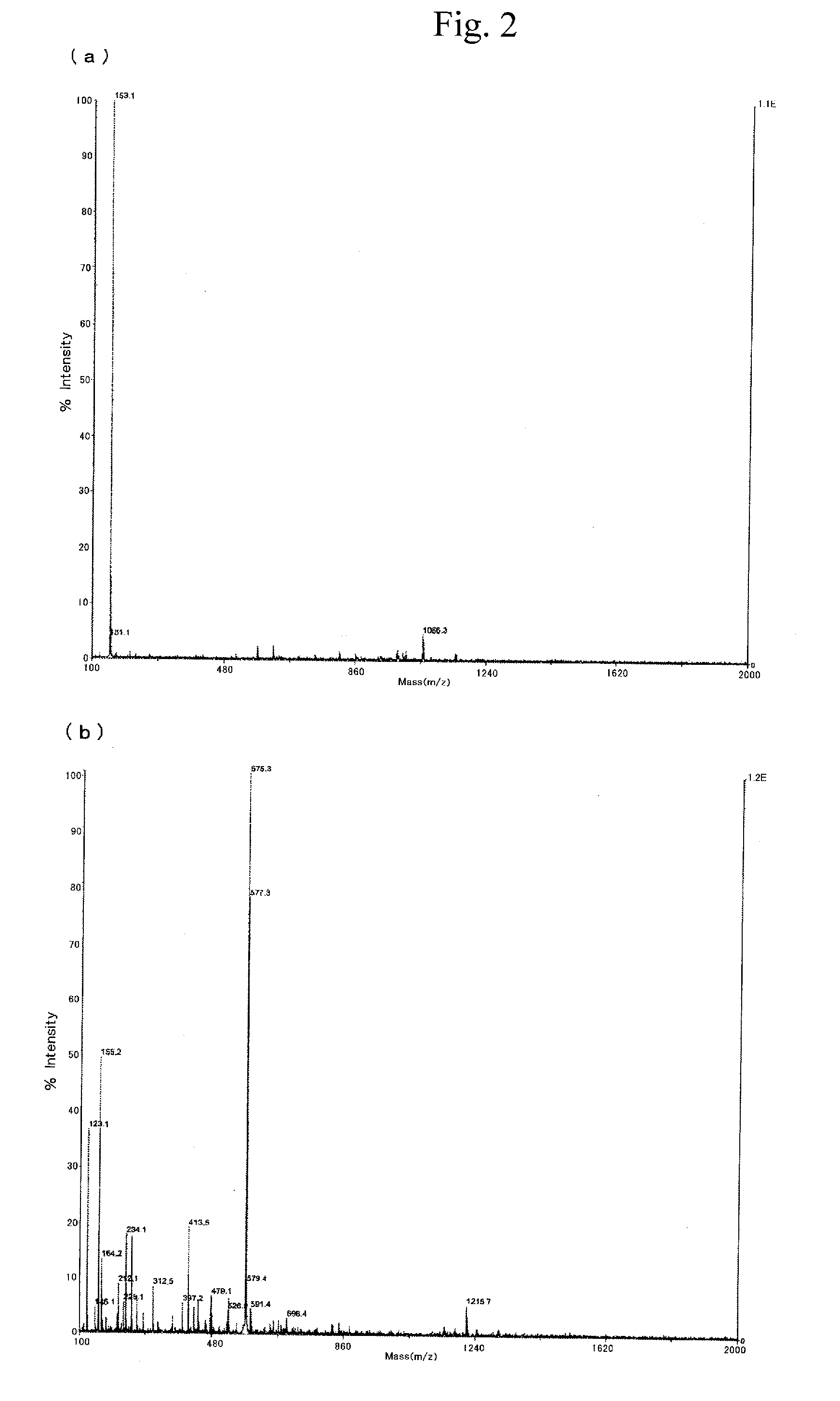Method of producing a desubstituted compound, organic semiconductor film and method of producing the same
- Summary
- Abstract
- Description
- Claims
- Application Information
AI Technical Summary
Benefits of technology
Problems solved by technology
Method used
Image
Examples
example 1
[0234]Exemplified compound (1) (the compound in which M represents Cu) [or Compound 1a (the compound in which M represents Cu in the Compound 1)] was produced according to the synthesis of dye compound (I-1) described in JP-A-2005-119165. This Exemplified compound (1) was soluble in a solvent such as chloroform.
[0235]The thus-produced Exemplified compound (1) was heated at the predetermined temperature, and changes of molecular weight and crystalline structure between before and after heating were each measured as described below.
(TG / DTA Measurement)
[0236]The thermal analysis (TG / DTA measurement) of the thus-produced Exemplified compound (1) was conducted. The TG / DTA measurement was conducted at the rate of temperature increase of 10° C. / min in a range of 30° C. to 550° C. under a current of nitrogen gas (flow rate: 200 ml / min) using EXSTAR 6000 (trade name, manufactured by Seiko Instruments Inc.), to determine a rate of decrease in mass. The measurement results are shown in FIG. 1....
example 2
[0246]6.21 g of α-t-butylsulfonylphthalonitrile was added to 10.5 ml of hexamethyldisilazane and 6.4 ml of dimethylformamide, and further 1.40 g of zinc bromide was added. Thereafter, the resultant mixture was stirred at 100° C. for 8 hours, and then filtrated with methanol, to obtain 4.00 g of Exemplified compound (51) (or Compound 1b (the compound in which M represents Zn in the Compound 1)). The MS spectrum of the compound indicated 1057 (=[M+]+1: positive polarity). The Exemplified compound (51) was soluble in a solvent such as chloroform.
[0247]The TG measurement results of the Exemplified compound (51) are shown in FIG. 5.
[0248]The thus-obtained Exemplified compound (51) was heated at 400° C. and a MS spectrum of the residue of the compound was measured. As a result of the measurement, it was found that a peak of the MS spectrum was changed to 576 (=[M+]: positive polarity). From these results, it is understood that the Exemplified compound (51) was changed to a zinc phthalocya...
example 3
[0249]20.0 g of α-t-butylsulfonylphthalonitrile was added to 2.2 g of N,N′-dimethylethylenediamine and 25 ml of N-methylpyrrolidone, and stirred at 160° C. for 8 hours. The resultant mixture was then filtrated with methanol, to obtain 3.50 g of Exemplified compound (52) (or Compound 1c (the compound in which M represents H2 in the Compound 1)). The MS spectrum of the compound indicated 996 (=[M+]+1: positive polarity). The Exemplified compound (51) was soluble in a solvent such as chloroform.
[0250]The TG measurement results of the Exemplified compound (52) are shown in FIG. 6.
[0251]The thus-obtained Exemplified compound (52) was heated at 400° C. and a MS spectrum of the residue of the compound was measured. As a result of the measurement, it was found that a peak of the MS spectrum was changed to 514 (=[M+]: positive polarity). From these results, it is understood that the Exemplified compound (52) was changed to a non-metal (hydrogen-type) phthalocyanine pigment as a result of des...
PUM
 Login to View More
Login to View More Abstract
Description
Claims
Application Information
 Login to View More
Login to View More - R&D
- Intellectual Property
- Life Sciences
- Materials
- Tech Scout
- Unparalleled Data Quality
- Higher Quality Content
- 60% Fewer Hallucinations
Browse by: Latest US Patents, China's latest patents, Technical Efficacy Thesaurus, Application Domain, Technology Topic, Popular Technical Reports.
© 2025 PatSnap. All rights reserved.Legal|Privacy policy|Modern Slavery Act Transparency Statement|Sitemap|About US| Contact US: help@patsnap.com



